
Expert Toric IOL Surgery in Kansas City – Astigmatism is a prevalent refractive condition of the eye that affects 70% of people. This can be corrected when doing cataract surgery and Discover Vision can provide a path to clearer vision with our state-of-the-art cataract and astigmatism treatments. Schedule your consultation today to discuss your options for vision correction.
Astigmatism in the eye means that the power of the eye is not spherical and that two different powers are required at different angles simultaneously. A toric lens implant does exactly that, with different curvatures providing powers to match and correct the prescription of the eye. The original intraocular lens implants were only spherical, meaning they did not treat any level of astigmatism.
There are two types of toric intraocular lens implants for treating astigmatism. The first type is the older version and is called a monofocal toric IOL implant, which means the lens was capable of providing one focal point. For example, the lens can be chosen to provide distance or near vision, but not both. These lenses can be used in about 30% of patients with astigmatism. The second type is an IOL that allows you to see at a range of distances. The Light Adjustable Lens (LAL) implant can treat a larger range of astigmatism, especially in the lower ranges that are still visually disabling if not addressed. The LAL for astigmatism is helpful in about 70% of patients.
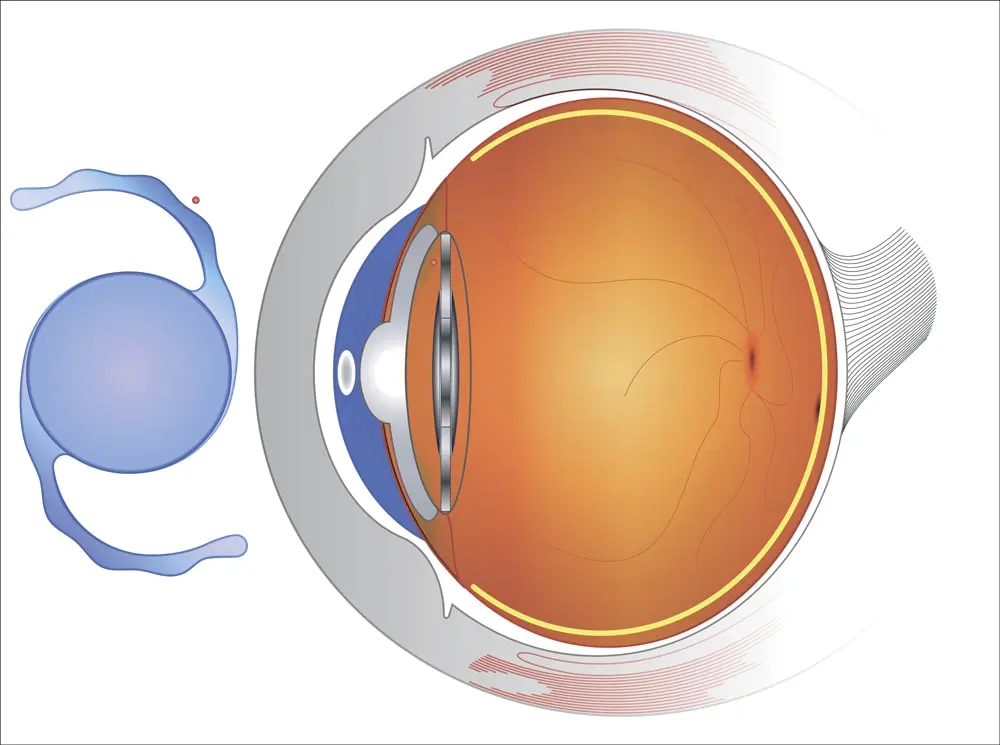

Toric IOLs may be used in conjunction with treating cataracts, so one surgery can do two things at once: remove the cataract and treat astigmatism. The primary purpose of toric artificial lenses is to correct astigmatism, and it is a popular choice for patients that suffer from both corneal astigmatism and cataracts. Your physician and eyecare team will help you decide which surgical option and IOL is right for you.
The major benefits of a toric lens implant are as follows:
Toric lenses for cataract surgery are a great option for patients with cataracts who have preexisting astigmatism and prefer not to wear glasses after surgery. Those wanting to correct their vision for distant or near vision are candidates for toric or astigmatism-correcting lens implants. This can either be a traditional toric implant or the Light Adjustable Lens, which corrects astigmatism.
Traditional astigmatism-correcting toric lens implants have multiple powers and are selected to best reduce, if not eliminate, your level of astigmatism. The Light Adjustable Lens implant, which delivers the most predictable result, can be fine-tuned for your precise amount of astigmatism. The eyecare experts at Discover Vision Centers will carefully measure your degree of astigmatism, which will allow them to best solve your astigmatism and provide you with the best possible vision. Schedule your consultation with a doctor at Discover Vision Centers today to see if a toric lens implant for astigmatism or the Light Adjustable Lens implants are the best option for you.

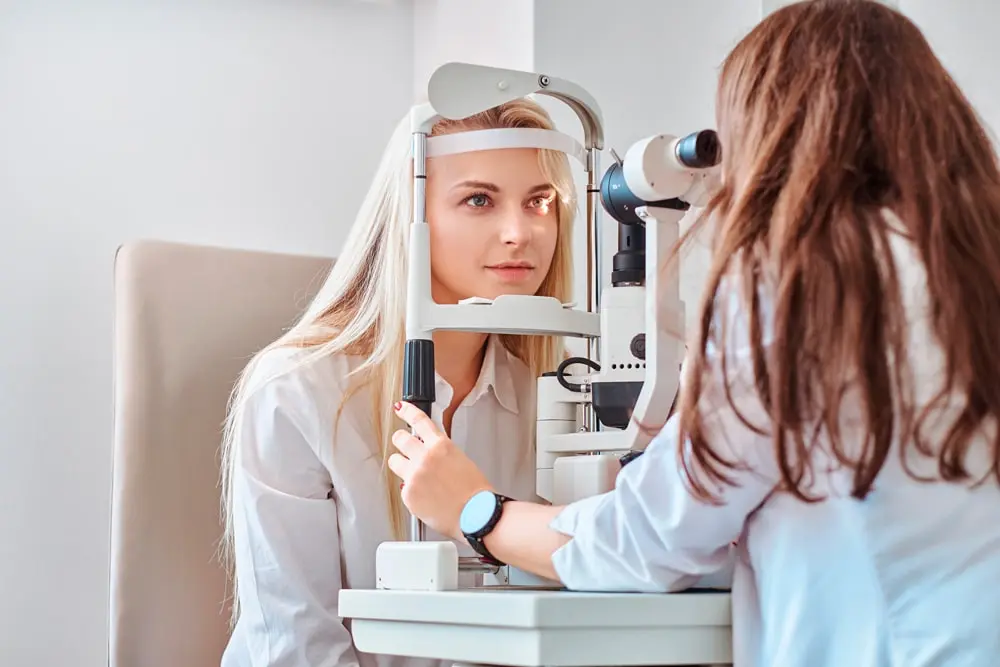
When preparing for cataract surgery, you and your surgeon will need to decide on the type of lens implant to be used. Toric lens implants and the Light Adjustable Lens are both effective ways to reduce or eliminate astigmatism in the eye. At your consultation, multiple devices will be used to measure and quantify your precise amount of astigmatism. A discussion of the results and a recommendation will be made by your doctor for the best lens option to reach your goal of vision without glasses or contacts. The decision to have a lens implant to correct your vision at the time of cataract surgery will have a positive lifelong impact.
Astigmatism in the eye is usually due to the cornea having a dual curvature. Instead of being spherical, like a baseball (with the same curve in all areas), the cornea is shaped more like a football, which has more of an oval curvature with a flatter curve in one direction and a steeper curve in the other. A toric lens is similar to the football analogy in that it has one power in one axis and a different power in the alternate axis. The toric lens implant will effectively correct the vision by having two prescriptions to match the differing curvature of the cornea.
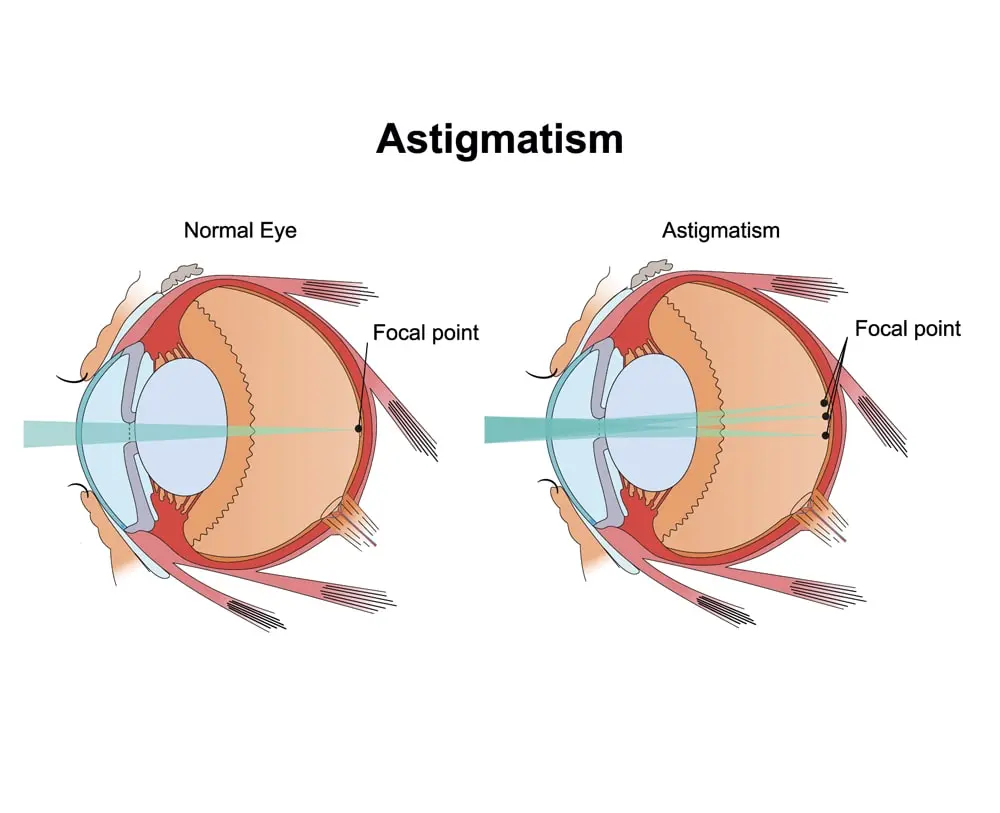
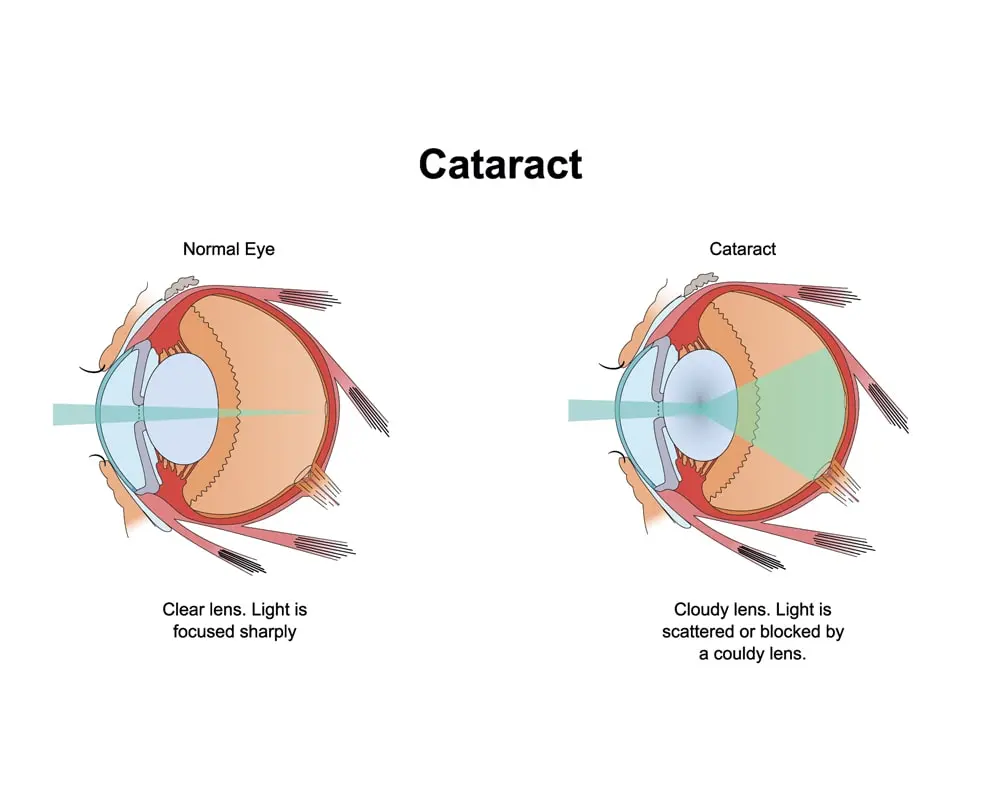
Toric intraocular lenses (IOLs) treat cataracts by effectively addressing both the cataract and astigmatism. Unlike traditional IOLs, toric IOLs are specially designed to correct astigmatism, a condition that distorts vision due to irregularities in the cornea or lens. By incorporating astigmatism correction into the lens, toric IOLs provide patients with improved visual acuity and reduce their dependence on glasses after cataract surgery.
Cataract surgery with toric IOLs involves a well-established and precise procedure to ensure excellent results.
The entire procedure is usually completed in a relatively short time and requires minimal downtime for recovery, allowing patients to quickly enjoy the benefits of improved vision.


Traditional toric lenses produce excellent visual results after surgery, and the toric lens implant success rate after cataract surgery is high. One study shows that 94% of astigmatic eyes treated with toric lens implants had residual astigmatism of 0.50 D or less, and 98% had 0.75 D or less after surgery. Studies with the Light Adjustable Lens have shown results that are even better as it continues to adjust the astigmatism after the eye has stabilized after surgery, around two to three weeks. Patient satisfaction with toric lens implants is incredible, with nearly 99% of patients saying they would select the same implant again. Toric lens implant recovery is very quick with either lens style.

Discover Vision Centers has been treating patients for over fifty years. Our team of expertly trained doctors and staff take pride in advancing technology for the best visual outcomes of our patients. We have done extensive FDA clinical research on toric intraocular implants, and this experience has translated into our ability to provide the best technology for the given situation. Discover Vision Centers has performed as many, or even more, Light Adjustable Lens implants correcting astigmatism as any clinic in the US. Rest assured, you will receive our best efforts in your care.
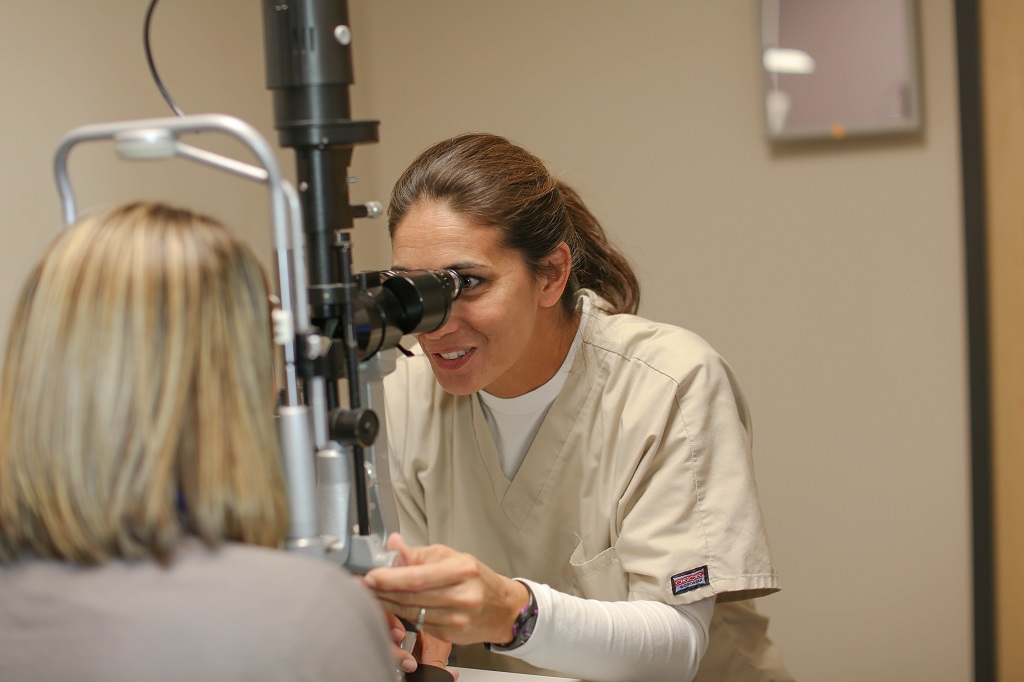

The cost of Toric IOL (Intraocular Lens) implants in Kansas City, MO, can vary widely based on factors such as the specific clinic, the surgeon’s expertise, and the complexity of the patient’s condition. Generally, prices can range from approximately $1,500 to $3,650 per eye. This cost often includes the lens itself, surgical fees, and pre- and post-operative care. However, it’s important to note that prices can differ from one provider to another, and some may offer package deals or financing options. Insurance coverage also plays a significant role in the final out-of-pocket expense, as many insurance plans do not cover the full cost of elective or premium lenses like Toric IOLs. For the most accurate and current pricing, it’s advisable to consult directly with eye care clinics or surgeons in Kansas City.

Dr. Doane is Board Certified by the American Board of Ophthalmology. He is an active FDA investigator and has worked extensively with the Light Adjustable Lens implant since 2008 and is the company’s longest tenured investigator of its lens technologies.
Toric IOL complications and risks may include residual astigmatism, lens misalignment, halos or glare, infection, inflammation, and retinal detachment. Although uncommon, patients should be aware of these potential issues. Regular follow-up visits are essential to monitor and manage any postoperative complications.
While toric IOLs can significantly reduce astigmatism, patients may still require eyeglasses for certain activities like reading or fine-detail work. Your eye doctor will advise you on the expected visual outcomes and whether you’ll need glasses postoperatively based on your individual vision needs.
Toric IOLs can correct a wide range of astigmatism, typically ranging from 1.00 to 4.00 diopters or more. The exact range of correction may vary depending on the specific toric IOL used and your individual eye measurements and needs. During the preoperative assessment, the ophthalmologist will determine the suitable toric IOL power and alignment required to address your astigmatism effectively.
Medicare does not consider astigmatism to be a covered service, so its treatment will not be paid for by Medicare. You should expect to pay the difference between a standard lens and the upgrade to a toric IOL.
Rarely would a toric lens implant need to be replaced or removed. If the power of the correction is not correct, it can be exchanged. Once it is in place and the power is correct, there is no reason to remove it. Occasionally, the lens can rotate immediately after placement, and it has to be rotated to its correct position.
Toric lens implants are designed to be a permanent solution for astigmatism correction and cataract treatment. They are intended to last for the rest of one’s life. Although your eyes can change (cornea, retina, and optic nerve), the implant itself will not.